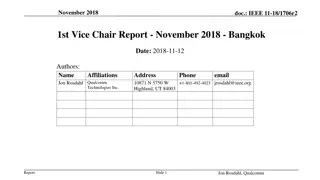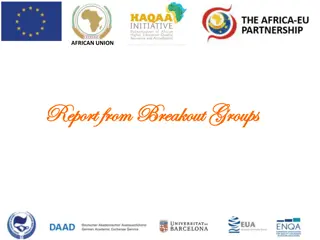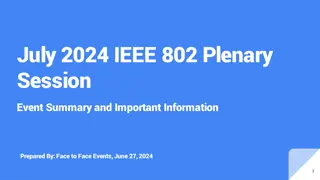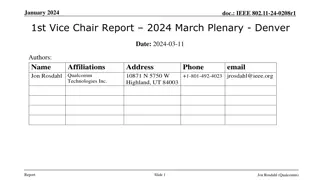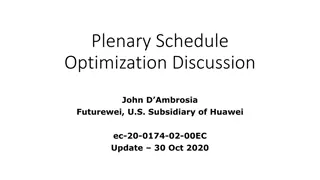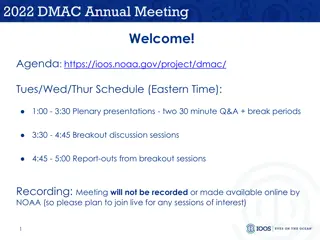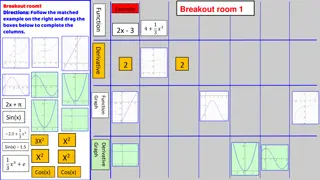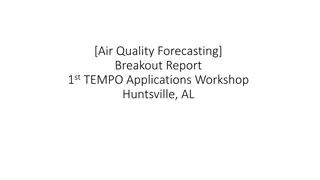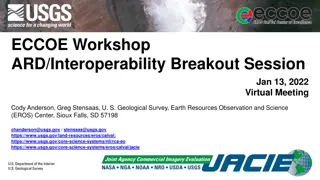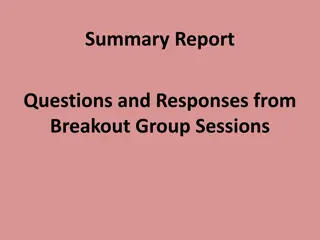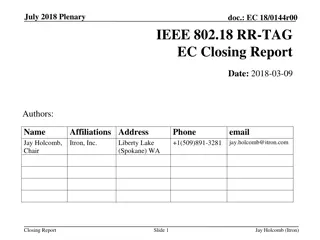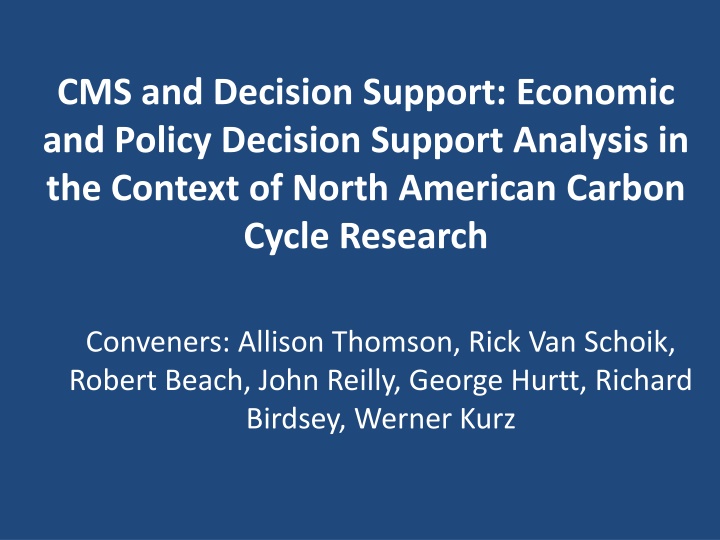
North American Carbon Cycle Research Analysis and Decision Support
Explore the economic and policy decision support analysis within North American Carbon Cycle research, focusing on relevant decision makers, data needs, and the interaction between the science community and stakeholders to drive effective carbon policies.
Uploaded on | 1 Views
Download Presentation

Please find below an Image/Link to download the presentation.
The content on the website is provided AS IS for your information and personal use only. It may not be sold, licensed, or shared on other websites without obtaining consent from the author. If you encounter any issues during the download, it is possible that the publisher has removed the file from their server.
You are allowed to download the files provided on this website for personal or commercial use, subject to the condition that they are used lawfully. All files are the property of their respective owners.
The content on the website is provided AS IS for your information and personal use only. It may not be sold, licensed, or shared on other websites without obtaining consent from the author.
E N D
Presentation Transcript
CMS and Decision Support: Economic and Policy Decision Support Analysis in the Context of North American Carbon Cycle Research Conveners: Allison Thomson, Rick Van Schoik, Robert Beach, John Reilly, George Hurtt, Richard Birdsey, Werner Kurz
Short Talks 1. Rick van Schoik Carbon Policy Issues in North America: It takes three to tango 2. Robert Beach - Current Agriculture and Forestry Economic Modeling Applications for Decision Support 3. Niven Winchester Indirect Land Use Change 4. Allison Thomson Long term economic and policy context for carbon mitigation 5. Molly Brown CMS into Action
Discussion Questions Who are the relevant decision and policy- makers and resource managers? How do they obtain information and what are the limitations of that information? What are the priority data needs to improve scientific guidance needed by decision makers? What are the practical carbon monitoring requirements for an effective carbon policy that includes terrestrial ecosystems?
Who are decision makers? Decision makers are the ones asking the questions Includes people in federal government Regional and local managers, planners, government, private sector etc. They are making decisions regardless, and will welcome and use information if scientists can provide it (in a way that meets their needs). They are concerned with specific questions relevant to their constituencies often different at local/state levels than federal level
Who is the science community? Carbon cycle scientists NACP investigators of physical processes. Carbon cycle modelers direct use of carbon data Economic modelers direct and indirect use of the data with a desire for more integration Science of decision support how can all this science, and the associated uncertainties, be presented to decision makers in a manner they can make use of?
How can the science community interact with decision makers/stakeholders? This interaction requires a sustained effort to bring communities together for an ongoing dialogue that influences the science as well as the decision making (e.g. more than just one workshop) For climate science, who can provide the sense of mission (and funding) to unite the scientists and information users? Chicken and egg problem: No one entity has the mission to push this from end-to-end
Examples of things that have worked to bring communities together Boundary organizations whose role it is to bring together science with users National Weather Service USDA NIFA Initiative designed to support projects that do this from the very beginning NOAA RISAs research focused but dealing with many local stakeholders National Integrated Drought Information System Has been embraced by the Western Governors Association
How do we tie this to NACP research? Data for models more consistent products for use in tools that decision makers might use (e.g. historical land use/land cover products; model estimates of system responses to change in climate, etc.) Problems of scale: Economic models operate at national or global scales, and use political boundaries as units for analysis, and need either: Consistent , scale-able information across the whole domain of interest Some new, robust method to use higher resolution data for areas where it is available (e.g. MCI) Specific case study project to identify a particular decision making need and how the science could inform it.









